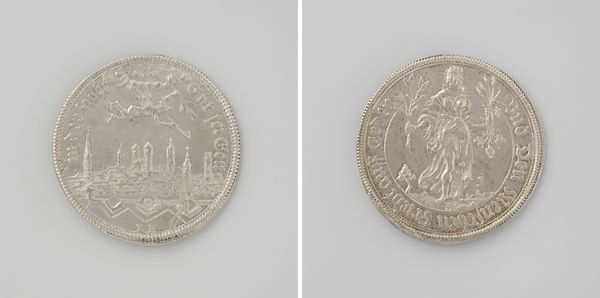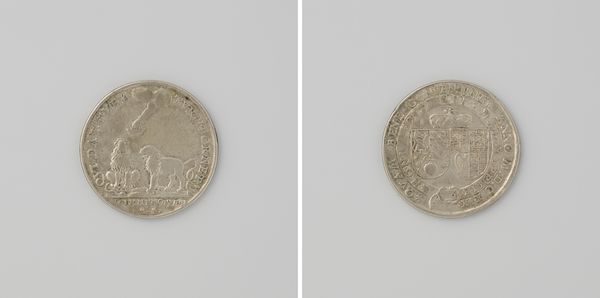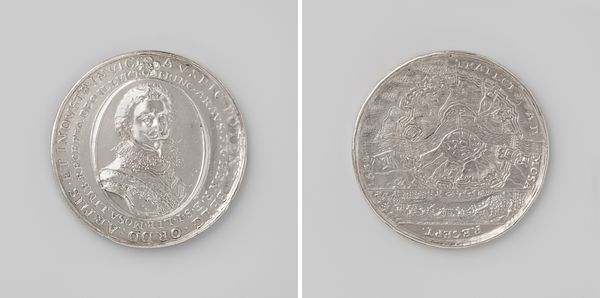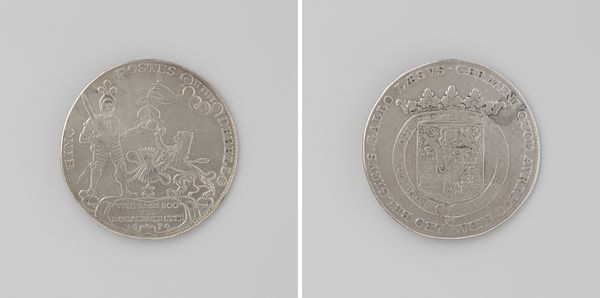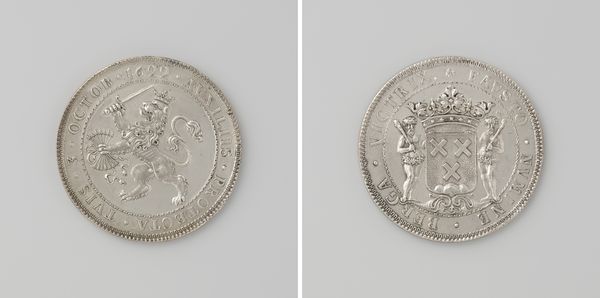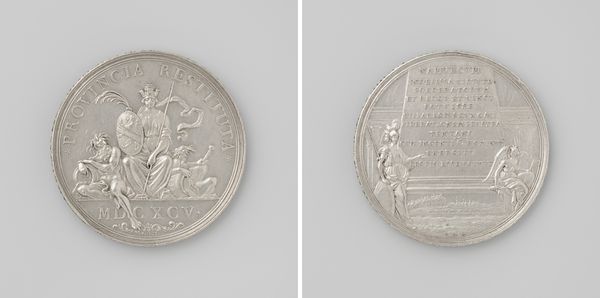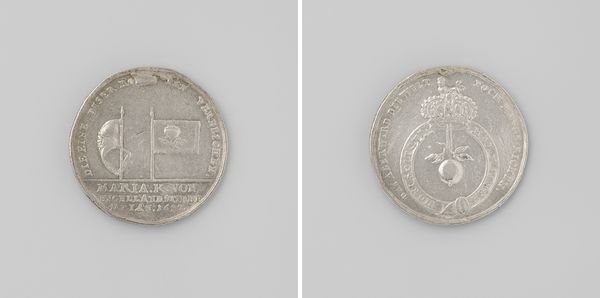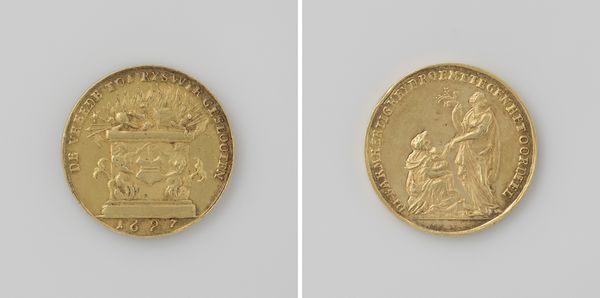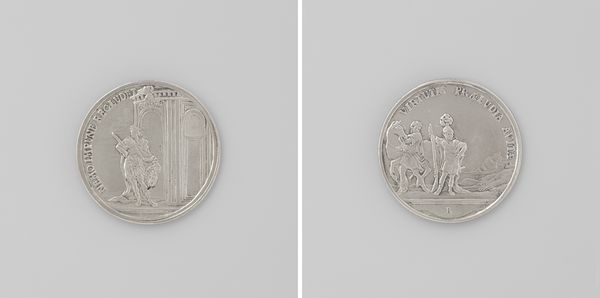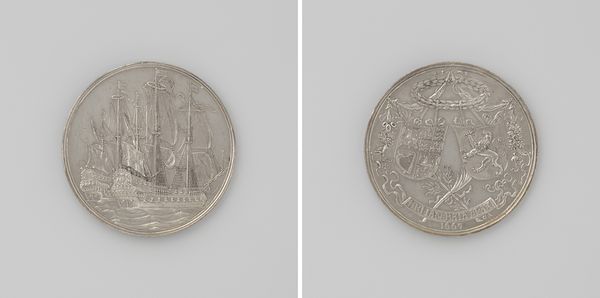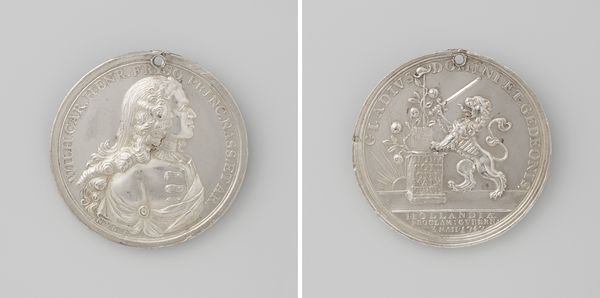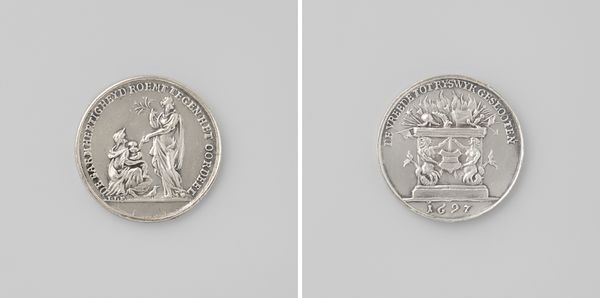
Verheffing van Willem III tot opperbevelhebber van land-en zeemacht 1672
0:00
0:00
metal, relief
#
portrait
#
medal
#
baroque
#
metal
#
relief
#
history-painting
Dimensions: diameter 3.8 cm, weight 24.57 gr
Copyright: Rijks Museum: Open Domain
Curator: Let's take a look at this silver medal from 1672, titled "Elevation of Willem III to Captain-General of the Land and Naval Forces." It's a fascinating little historical marker from the Rijksmuseum's collection. Editor: "Little" is right. It's precious, isn't it? Feels almost like holding a whispered secret from a very dramatic past. The low relief gives it a kind of ethereal quality. Curator: It does. What makes this medal interesting to me is that it wasn’t commissioned by Willem himself, or even by the States General directly. This piece appears to be propaganda created for popular consumption during a really pivotal moment for the Dutch Republic. Editor: Propaganda… Right. I can't help but get stuck on Willem. Look at his slightly wind-whipped hair and self-possessed look. It suggests unwavering resolve and alludes to the monumental task of national defense, you know, giving off an impression of strength. Curator: Absolutely. His horseback stance echoes classical equestrian statues, designed to portray leadership and authority. The inscription reinforces that sentiment—a direct call to protect freedom. Editor: Do you think the people really ate this kind of messaging up back then, though? I find myself wondering. Curator: Hard to say precisely, but the ubiquity of these medals suggests a wide distribution, indicative of significant investment in image-making. And certainly the context was right –1672 was the "disaster year" in the Netherlands when it was simultaneously attacked by England, France and some German states. He certainly helped pull them back from the brink of utter disaster. Editor: Still…It does reek a bit of hero worship. It makes me think how, even then, the narratives got so spun to create an idolized character that maybe wasn’t fully real. It does spark consideration about our own modern spin-cycles and curated mythologies. Curator: Well said! Perhaps one thing the medal does best is encapsulating the Dutch Republic's need for, and active construction of, heroes in times of extreme crisis. And, look how that image lingers today in popular portrayals and even official iconography. Editor: Okay, you have convinced me of the real and long lasting influence these kinds of pieces have in cementing and perpetuating ideas. Fascinating piece.
Comments
No comments
Be the first to comment and join the conversation on the ultimate creative platform.
